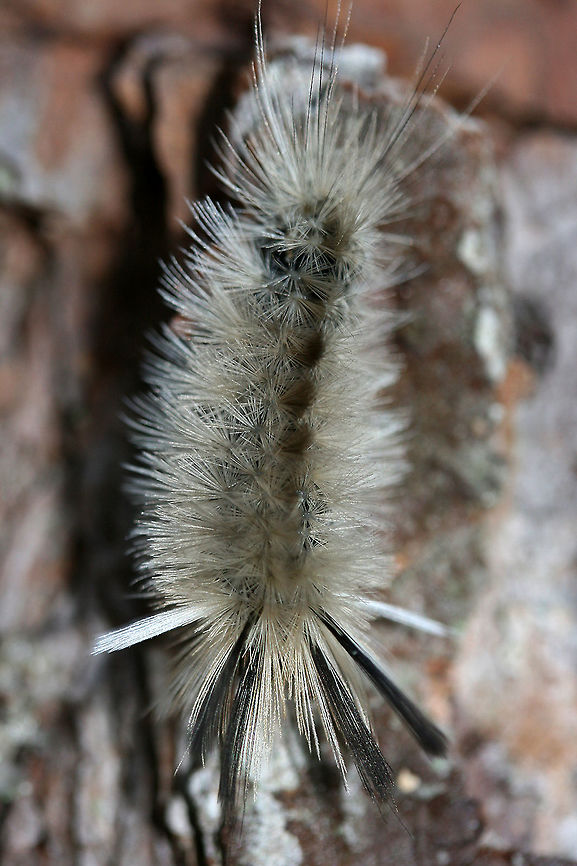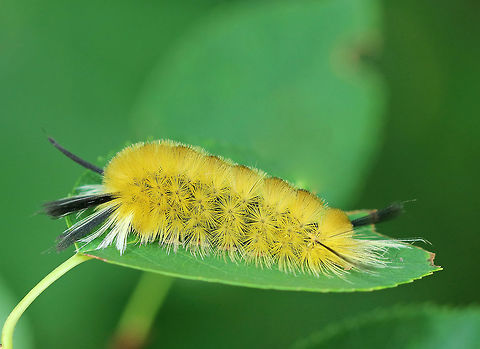
Banded Tussock Moth larva (Halysidota tessellaris)
White to gray Erebid caterpillar with long setae arranged in tufts. Prominent black and white lashes are present at front and rear of caterpillar. Exhibited interest in my flashlight and proceeded to follow the light source. Halysidota tessellaris caterpillars acquire alkaloids from host plants which are used as a defense. When hollow, urticating hairs are touched, defensive alkaloids are released from gland cells. Touching these hairs can result in hives, anaphylaxis, and (in some cases) even death.
Habitat:
Crawling on a stump surrounded by thick mulch near a clearing in a dense mixed hardwood forest.

"Halysidota tessellaris", also called the banded tussock moth, is in Erebidae. Like many related species, it has chemical defenses it acquires from its host plants, in this case, alkaloids, at least in adults. Larval brazen behaviours suggest that they are chemically protected; they have not been analyzed for alkaloid content.
